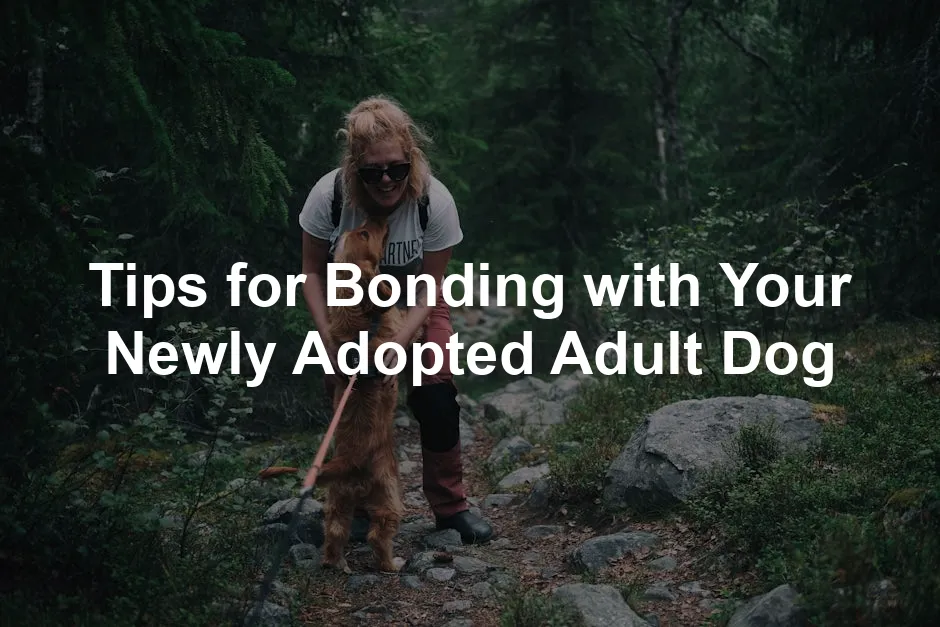Introduction
Adopting an adult dog is like opening a mystery novel. Each page reveals a unique story, filled with joys and challenges. The excitement of welcoming a furry friend into your home can be overwhelming. You may find yourself daydreaming about playdates and belly rubs. Yet, the reality is that bonding with your new companion requires time, patience, and understanding.
Adult dogs often come with their own set of experiences. They may be shy, anxious, or even skeptical about their new surroundings. This means that building a solid bond is crucial for ensuring a happy and healthy relationship. Take a deep breath and prepare to embark on a journey of trust-building. It’s often more about your dog discovering their new life than it is about you.
Remember, patience is key. Every wag of the tail and soft nuzzle is a step toward understanding each other. Celebrate the small victories along the way, as they lay the foundation for a loving partnership. So grab your treats and prepare for a tail-wagging adventure!
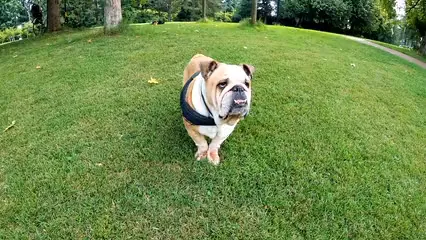
Understanding Your New Companion
The Importance of Patience
When you bring home your newly adopted dog, it’s essential to understand that they need time to adjust. Some dogs may take a few days, while others might require weeks to feel comfortable in their new environment. It’s like moving to a new school; it takes time to find your groove. Your dog is encountering new smells, sounds, and sights that can be overwhelming.
This adjustment period is crucial. During this time, your dog may exhibit anxiety or shyness. They might hide or avoid eye contact. It’s important to allow them to come to you at their own pace. A calm, reassuring presence can work wonders. If your dog has a challenging background, knowing their history can help guide your approach. For example, a dog from a shelter may have experienced neglect or abuse, making trust building even more vital. You can find helpful dog training tips for adopting a rescue dog with anxiety to assist you in this process.
Speaking of making your dog feel at home, a good Dog Bed can provide a cozy spot where your furry friend can retreat and feel safe. It’s a small investment for a big return in terms of comfort and security!
Understanding your dog’s anxiety and how to address it is crucial for building trust. dog training tips for adopting a rescue dog with anxiety
Recognizing Individuality
Just like people, dogs have their own personalities and histories. Some may be social butterflies, while others are introverts. This individuality influences how they bond with you. Don’t expect your new friend to instantly cuddle up beside you. Some dogs take longer to warm up than others, and that’s completely normal!
Take the time to observe your dog’s behavior. Are they playful? Shy? Curious? Understanding these traits can help you tailor your interactions. Recognizing your dog’s unique needs fosters a deeper connection. Bonding is a dance, not a race. Be prepared to adjust your expectations and approach as you learn more about your new companion.
In summary, patience and an appreciation for individuality are your best friends in this bonding journey. Your dog’s past experiences shape their present behavior, and understanding this can help cultivate a loving and trusting relationship.

Creating a Safe Environment
Preparing Your Home
Congratulations on welcoming your new adult dog! Before they arrive, prepare your home like you would for a new roommate—except this one has a tail and a penchant for mischief. Here are some essential items to have ready:
- Dog Bed: A cozy spot where your dog can retreat and feel safe.
- Toys: Engage their mind and keep boredom at bay. Chew toys, plush toys, and interactive puzzles are fantastic options to consider.
- Food and Water Bowls: Stainless Steel Bowls are easy to clean and sturdy.
- Leash and Collar: Choose a comfortable collar with a tag that includes your contact information.
- High-Quality Dog Food: Consult your vet for recommendations suited to your dog’s needs.
Next, let’s not forget about dog-proofing your home. Just like child-proofing, it’s essential to keep your four-legged friend safe. Move hazardous items, such as cleaning supplies, electrical cords, and plants that could be toxic. Create a safe space where your dog can retreat. This might be a quiet room or a cozy corner with their bed and toys. A retreat zone is crucial, especially for anxious dogs. It’s their sanctuary—a place to feel secure as they adjust to their new surroundings.
Establishing Routines
Dogs thrive on routines. Establishing a consistent schedule helps them feel secure and reduces anxiety. Your dog will appreciate knowing when to expect meals, walks, and playtime. Here’s a simple routine to set up:
- Feeding: Feed your dog at the same time each day. This helps them learn when to expect food and keeps their digestive system happy.
- Walks: Schedule daily walks. This not only provides exercise but also allows your dog to explore their new neighborhood.
- Playtime: Dedicate time each day for play. Fetch, tug-of-war, or even a good old-fashioned game of chase can work wonders for bonding.
By sticking to a routine, you create predictability in your dog’s life. The more predictable their environment, the more they can relax and trust you. Remember, patience is key. It might take some time for your dog to adjust, but with love and consistency, they will soon feel right at home.

Building Trust and Communication
Using Positive Reinforcement
Building trust with your newly adopted dog is a vital step in your bonding journey. One of the most effective ways to do this is through positive reinforcement. This means rewarding your dog for good behavior rather than using punishment for bad behavior. It’s like turning your dog into a superstar—every time they do something right, they get a standing ovation!
Start by identifying what your dog loves most. Is it treats, praise, or a scratch behind the ears? Use these rewards during your training sessions. For example, when your dog sits on command, shower them with praise and a tasty treat. Use a cheerful tone, and let them know they’re a good dog! Over time, this method builds their confidence and reinforces the bond between you.
Consider using techniques like clicker training. When your dog performs a desired action, click the clicker and immediately give them a treat. This method helps them associate the sound with positive outcomes, making them eager to learn more.
Remember, patience is essential. If your dog seems hesitant, give them time. Allow them to approach at their own pace. Celebrate small victories. A wagging tail or a quick glance your way is worth a round of applause! This approach not only nurtures trust but also transforms training into a fun, engaging experience for both of you. With every treat and every praise, you’re reinforcing the message: “You’re safe here, and I’ve got your back!”

Engaging in Bonding Activities
Daily Walks
Daily walks with your newly adopted adult dog are like mini-adventures! They provide the perfect opportunity for bonding and exploring together. Every sniff, wag, and tail chase is a chance to connect. Remember, your dog is eager to discover the world around them, and you can be their trusty guide.
To keep things exciting, vary your walking routes. Explore different parks, trails, or even the neighborhood. Changing scenery keeps your dog engaged and curious. Plus, it helps build their confidence in new environments. Each walk is an opportunity to bond over shared experiences. Celebrate those moments together, whether it’s a quick pit stop for a scratch behind the ears or a game of “who can spot the squirrel first.”
And don’t forget to bring some treats! A little reward for good leash manners can reinforce positive behavior. It’s like a mini celebration for your dog every time you head out the door. So grab that leash, put on your walking shoes, and get ready for some tail-wagging fun!
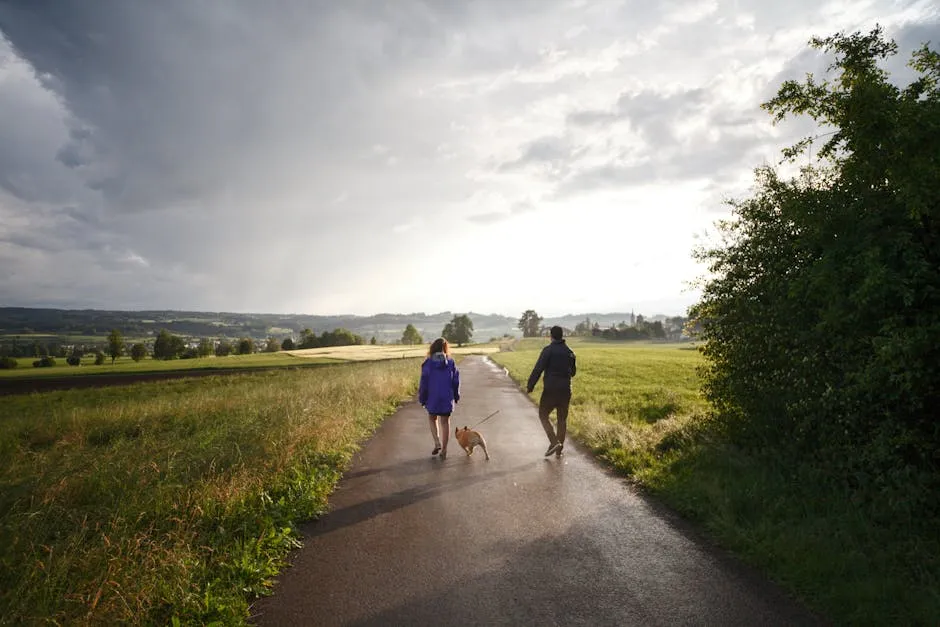
Playtime and Training
Playtime is where the magic happens! Engaging in interactive games like fetch and tug-of-war can strengthen your bond significantly. These activities are not just fun; they also help your dog release pent-up energy. Plus, they provide a fantastic opportunity for you to learn more about your dog’s personality. Is your pup a fetch fanatic or a tug-of-war champion? Each game reveals a little more about who they are.
Interactive play fosters communication and teamwork, essential components in building a lasting connection. When your dog brings the ball back, it’s not just about fetching; it’s a shared experience that builds trust. And when you play tug-of-war, you’re teaching them about boundaries and control. It’s a win-win!
Basic training is equally important. Teaching commands like sit, stay, and come is foundational for your relationship. It fosters clear communication and helps your dog understand what you expect. Training sessions should be enjoyable, not stressful. Incorporate treats and praise to make learning a positive experience. Remember, each command mastered is a step toward a deeper bond.
Consider turning training into a game. Use treats to motivate and reward your dog, keeping their interest piqued. Start with simple tasks and gradually increase the challenge. Celebrate every little victory! With patience and consistency, you’ll witness your dog’s confidence grow.
So, whether it’s playtime or training, make sure to enjoy the process. Your dog will appreciate the effort, and before you know it, you’ll be partners in crime, tackling the world together, one playful leap at a time!
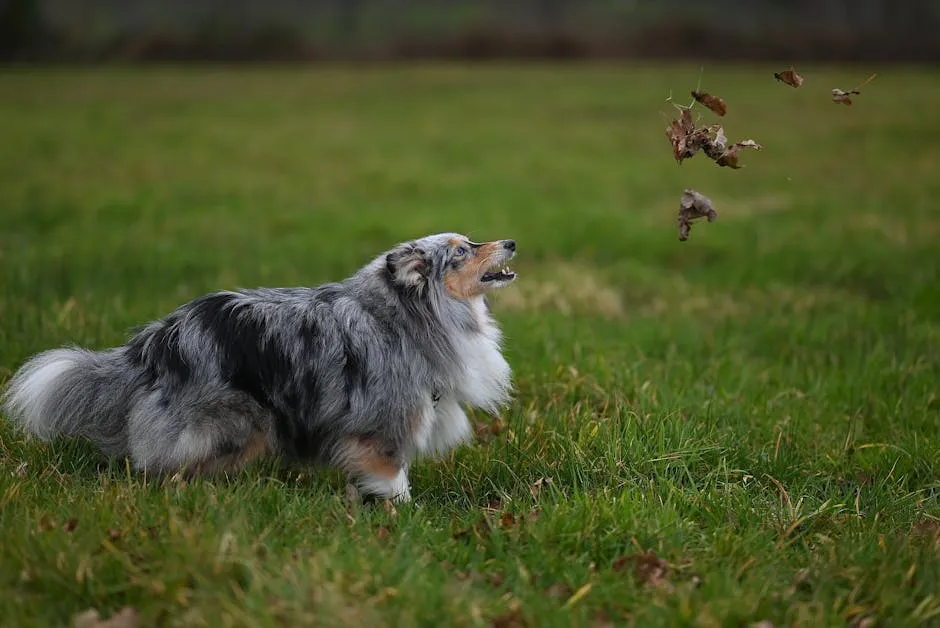
Addressing Behavioral Challenges
Common Issues with Rescue Dogs
Adopting a rescue dog is rewarding yet challenging. Many adult dogs come with their own baggage. It’s important to recognize common behavioral issues that can arise. Anxiety is a frequent concern. Your new furry friend may be fearful of loud noises, strangers, or even sudden movements. This can lead to hiding or excessive barking. Fearfulness can also manifest as aggression, especially when your dog feels cornered or threatened.
Another issue is house training. Even if a dog was previously trained, they may need reminders in a new environment. Some dogs may display signs of separation anxiety. You might notice them whining, howling, or attempting to escape when left alone. These behaviors can be overwhelming for both you and your new companion.
So, how can you address these challenges? Start with patience and understanding. Give your dog time to adapt to their new surroundings. Create a safe space where they can retreat when feeling anxious. Use calming activities, such as gentle massages or quiet time together. Establish a consistent routine to instill a sense of security.
Incorporate positive reinforcement techniques. Reward your dog with treats and praise when they exhibit good behavior. This helps build their confidence while reinforcing desired actions. If your pup shows fear of objects or situations, introduce them slowly. Use treats or toys to create positive associations. You can also refer to tips for socializing rescue dogs with fear issues for additional guidance.
Socializing your rescue dog can play a crucial role in overcoming their fear issues. tips for socializing rescue dogs with fear issues
Remember, progress may be slow. Celebrate small victories along the way. If behavioral issues persist, don’t hesitate to seek help from professionals. Trainers or behaviorists can provide valuable guidance tailored to your dog’s needs.
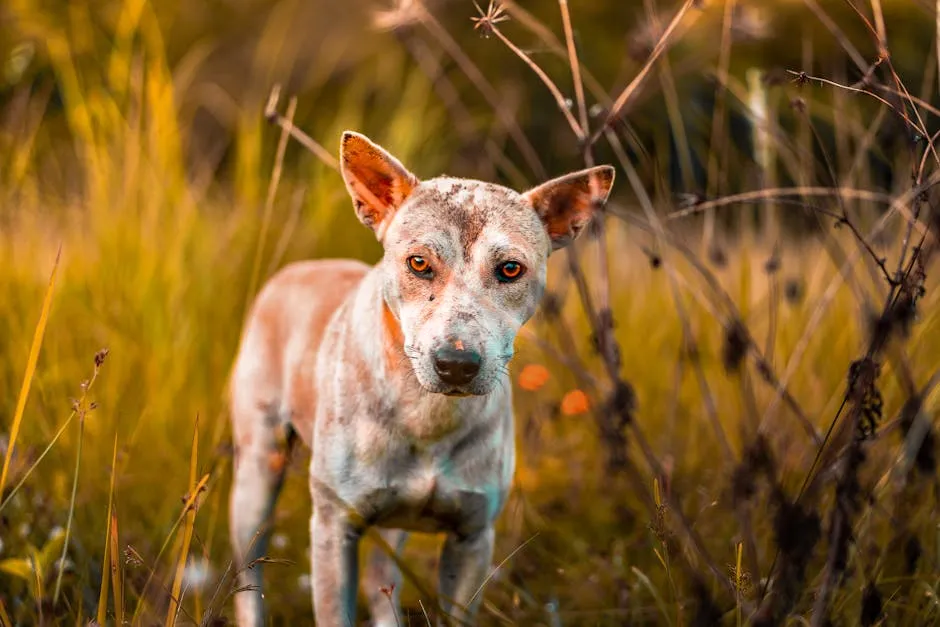
Consulting Professionals
Sometimes, despite your best efforts, challenges may persist. If you’re feeling stuck, consider consulting professionals. Trainers and behaviorists have the expertise to assess your dog’s behavior. They can pinpoint specific issues and provide tailored strategies for improvement.
Professional help can be invaluable, especially for deeper behavioral concerns. They can guide you through training techniques that promote understanding and cooperation. This can lead to a stronger bond between you and your dog.
Moreover, working with a professional sets realistic expectations. They can help you understand your dog’s behavior better and offer insights into their specific needs. This guidance can alleviate frustrations and improve your confidence as a pet owner.
Remember, reaching out for help is not a sign of failure. It’s a proactive step toward ensuring a happy, healthy relationship with your newly adopted adult dog. With the right support, you both can thrive together, turning challenges into opportunities for growth.
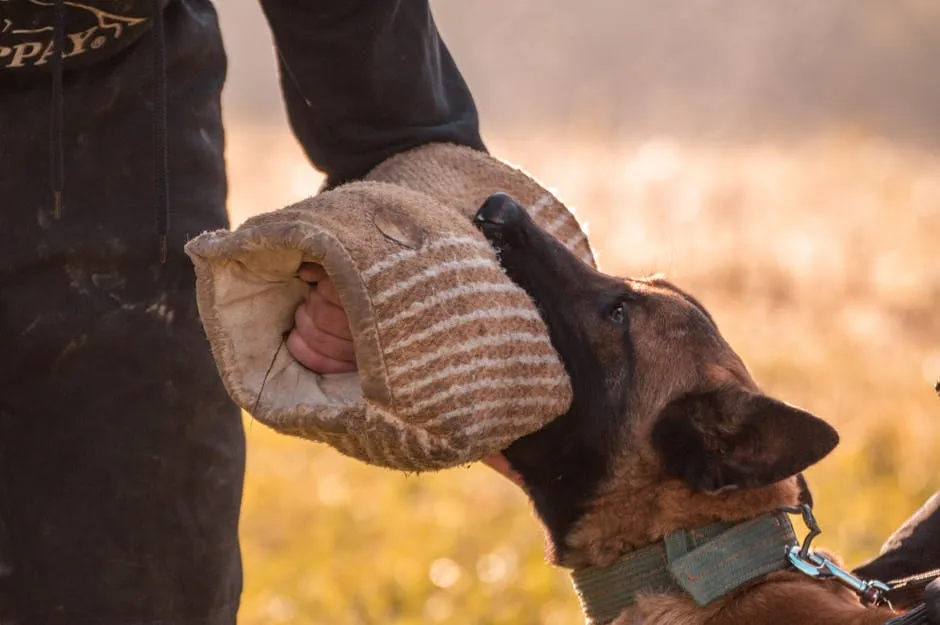
Conclusion
Bonding with your newly adopted adult dog is a journey of love and discovery. Remember, it takes time, patience, and effort. Your furry friend may have a past that influences their behavior. Understanding this can guide your approach and help build trust.
Celebrate the small victories along the way. A wagging tail, a gentle nuzzle, or a soft gaze are all signs of progress. Each moment spent together strengthens your bond. Enjoy the little things—like the first time your dog follows you around or cuddles up beside you on the couch.
As you navigate this new relationship, keep your expectations realistic. Some days may feel challenging, while others will be filled with joy. Embrace every experience, knowing that you are creating lasting memories. Take your time, and remember that your dog is learning to trust and love you, too.
So grab those treats, put on your favorite tunes, and embark on this delightful adventure. Your efforts will be rewarded with a faithful companion who will bring joy to your life. In the end, the bond you form will be one of the most fulfilling relationships you’ll ever have.
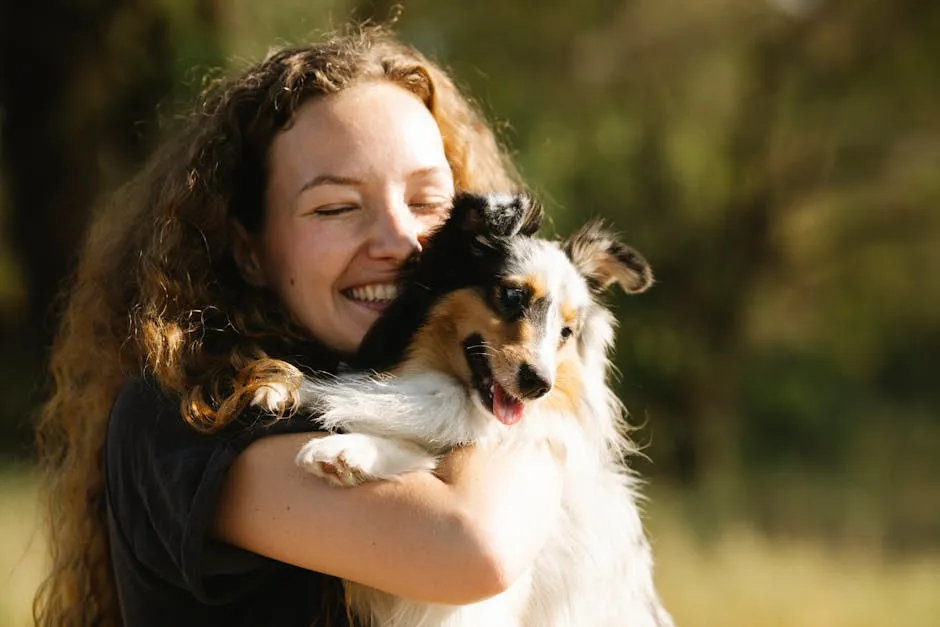
FAQs
How long does it take for an adopted dog to adjust?
Adjustment timelines vary widely among dogs. Generally, it can take anywhere from a few days to several months. Factors affecting this period include the dog’s past experiences, personality, and environment. A rescue dog may need time to feel safe and secure in their new home. During the first three days, they might experience a detox phase, sleeping often and exploring cautiously. By three weeks, they may start to recognize routines, and by three months, many dogs feel completely at home.
What are the best ways to build trust with a rescue dog?
Building trust is a gradual process. Start by being patient and giving your dog space to adjust. Use positive reinforcement techniques, rewarding good behavior with treats, praise, or playtime. Engage in activities they enjoy, like walks or games, to create positive associations. Gentle petting and calm communication also help. The key is consistency; trust develops over time through understanding and shared experiences.
Is it normal to feel overwhelmed after adopting?
Absolutely! It’s common for new dog owners to feel overwhelmed. Adopting a pet brings significant changes to daily life and routines. You might worry about their behavior or how to bond effectively. Remember, you’re not alone in feeling this way. Many others have experienced similar emotions. It’s essential to seek support, take breaks, and remind yourself that bonding takes time.
Can I train an adult rescue dog?
Yes, you can definitely train an adult rescue dog! Older dogs are often eager to learn and can be quite responsive to training. Positive reinforcement methods work exceptionally well, as they encourage good behavior and strengthen your bond. Training sessions should be fun and engaging, focusing on basic commands and gradually introducing new skills. With patience and practice, your adult dog can learn just as effectively as a puppy.
What should I do if my dog seems disinterested in bonding?
If your dog appears standoffish, don’t worry; this is common. Start by giving them space and allowing them to approach you when ready. Engage in low-pressure activities like gentle play or sharing treats. Observe their body language for signs of comfort or discomfort. Try different ways to interact, such as short walks or quiet time together. Building trust takes time; be patient and consistent in your approach. With love and understanding, your dog will gradually open up to you.
On a practical note, having the right supplies can also ease your journey. For instance, a Dog Grooming Kit can keep your dog’s coat looking fabulous while also providing a bonding experience during brushing sessions.
Please let us know what you think about our content by leaving a comment down below!
Thank you for reading till here 🙂
All images from Pexels

